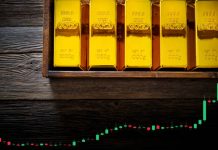Short-term bond yields rose Friday amid Fed comments disagreeing with markets pricing rate cuts. Equities were steady, while oil rose and the US dollar fell, AUD up to 0.6510. Today’s global calendar is low key.
Friday
Australia’s calendar was effectively empty. AUD/USD traded a very tight 0.6458-75 range. Regional equities were quite mixed, Hong Kong under pressure again but Japan closing up and the ASX 200 in the middle, -0.1%.
Currencies/Macro
The US dollar fell against all major currencies on Friday despite increased yield support. EUR/USD rose from 1.0850 to 1.0916 – a three-month high. GBP/USD rose half a cent to 1.2460. USD/JPY fell from 150.75 to 149.65. AUD/USD rose 0.7% to 0.6510. NZD/USD rose only 20 pips to 0.5990. AUD/NZD rose about 40 pips to 1.0875.
US housing starts in October rose 1.9% (est. -0.6%), although the prior month was revised lower, from +7.0% to +3.1%. Building permits rose 1.1% (est. -1.4%, prior revised from -4.4% to -4.5%).
Boston Fed president Collins said policymakers should not take further tightening off the table despite welcome progress on inflation: “In order to get back down to 2% in a reasonable amount of time we need to be patient and resolute, and I wouldn’t take additional firming off the table. We need to really stay the course.” San Francisco Fed president Daly said: “I wouldn’t want to declare victory on either our inflation battle or get overly optimistic about what kind of disruptions in the economy there will be. We have to continue our hard work and make sure that we get there as softly as possible, as gently as possible”.
Fed governor Barr said: “We’re likely at or near the peak of where we need to be in terms of having a sufficiently restrictive stance of monetary policy that will sustainably bring inflation down to 2%. I think the recent economic readings reinforce my view that that is probably correct”.
ECB member Holzmann (Austria) said it won’t cut interest rates in the second quarter, and that market expectations for a reduction are premature: “That would be somewhat early. We are still trying to communicate, please, don’t think that we are already at the end of the path.” ECB’s Villeroy (France) said its decision to halt interest rate increases at its October meeting is fully justified by a slowdown in inflation: “It’s the proof of the effectiveness of monetary policy, which fully justifies the halting of the sequence of rate hikes decided by the Governing Council”.
BoE’s Ramsden said market pricing was too low: “Markets, as always, are entitled to make their assessment of the future…but may be underpinned by a different view about prospects…The encouraging progress on headline inflation masks diverging and significant trends in the components…evidence of greater persistence to inflation together with continued upside risks”.
Interest rates
US 2yr treasury yields rose from 4.84% to a 4.89% close, while the 10yr yield closed unchanged at 4.44% (via 4.38%-4.47%). Markets currently price the Fed funds rate, currently 5.375% (mid), to be unchanged at the next two meetings, with easing expected from May 2024.
Australian 3yr government bond yields (futures) roundtripped from 4.10% to 4.05% and back, while the 10yr yield roundtripped from 4.48% to 4.42% and back. Markets currently price no hike at the next meeting on 5 December, but a 35% chance of one by May 2024. New Zealand rates markets price the OCR, currently at 5.50%, to be unchanged on 29 November and in February, with easing expected from May 2024.
Credit spreads saw a positive close on Friday with Main another 2bp better at 70 and CDX in a bp to 64 as both indices close at their (roll adjusted) ytd tights, while US IG cash was also 2-3bp better to now be ~15bp tighter month to date with US senior fins ~20bp better over the same period. Primary slowed for Friday as expected with no supply from the US while Europe saw 3 issuers come to market
Commodities
Crude markets ended the week with a solid bounce as traders focused on the upcoming OPEC+ meeting November 26 and the possibility that the group would weigh further production cuts. The December WTI contract rose $4.1 or 3% to $75.89 while the January Brent contract rose $4.12 or 3.19% to $80.61. Goldman argued that they “believe that OPEC will ensure that Brent prices end up in a $80 to $100 range in 2024 by ensuring a moderate deficit and leveraging its pricing power”. And over the weekend the FT reported that “Saudi Arabia is preparing to prolong oil production cuts into next year and OPEC+ weighs further reductions in response to falling prices and rising anger over the Israel-Hamas war” with one informed person describing the cartel as “galvanised” by the conflict. Still, WTI fell 1.7% on the week and Brent fell 1% as global inventory rose and concerns increased about production from the likes of the US, Iraq, Venezuela and Brazil. The FT also reported that Petrobras was aiming to transform Brazil into “a global energy power”. Brazil’s crude output grew 4% in 2022 to 3mbpd and the Brazilian government has an aggressive plan to hit 5.4mbpd by the end of the decade. The massive pre-salt region has costs of roughly $35/barrel with CO2 emitted per barrel roughly 18kg/b according to Rystad Energy. Finally, Bloomberg reported that Western oil sanctions are not working with gross revenues from the three main tax sources of petrodollars nearly doubling between April and October, coming in at $13bn last month according to Bloomberg calculations.
Metals bounced Friday with risk-on sentiment and a sharp fall in the US$ helping the rebound. Copper jumped 1% to $8,309 while nickel jumped 0.88% to $17,170. Aluminium was unchanged though at $2,216 and zinc down 0.7% at $2,559. Bloomberg reported that Chinese copper smelters had agreed the first drop in fees in 3yrs by 9% to $80 for treatment and $8 for refining. The price drop indicates a tightening in the market with China bringing on a massive wave of additional processing capacity. Panama’s supreme court will deliberate on First Quantum’s contract on November 24, considering two constitutional challenges with a backdrop of protests and some groups calling for a national strike.
Iron ore markets marked time as traders focused on the reported massive Chinese stimulus of low-cost financing for urban village renovation and affordable housing programs. However, prices gave back some gains into the end of the week as weak housing data and warnings from the NDRC capped sentiment. The December SGX contract is down $1.65 from the same time Friday morning at $129.15 while the 62% Mysteel index fell $2.25 to $130.25. Goldman noted that “the iron ore market should remain relatively tight, and prices well supported” given low inventory and restocking over year end. Port inventories fell 1.1% last week.
Day ahead
Australia’s data calendar is quiet this week though we will see RBA November minutes on Tuesday and Governor Bullock delivers a keynote speech on Wednesday evening.
The global data calendar is low-key today. China is expected to maintain its 1-year loan prime rate at 3.45% and its 5-year rate at 4.20% (12:15pm Syd).












